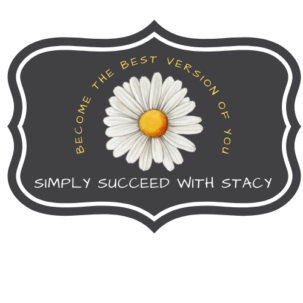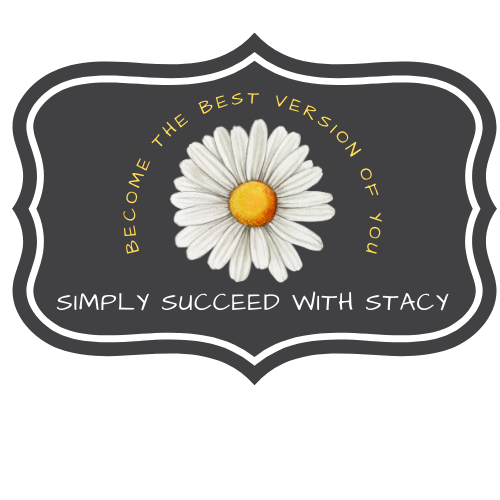“Where there is a
–Pete Leibmanwillwhy, there is a way.”
I highly recommend this book! – Work Stronger by Pete Leibman. If you are looking for a book to help you with creating better habits, this is the book for you!
I want to discuss what he called the “POWER Pyramid.” Each letter being an acronym.

P – Purpose
In order to maintain any habit you have to know what your why is. You always hear the saying “Where there is a WILL, there is a way.” He modifies this to be “Where there is a WHY, there is a way. Discovering why you want to do something will help you keep going when it gets tough and you want to give up or just stop trying. Figuring out your why isn’t the easiest thing though. So many people just touch the surface of it and when it comes down to it, the why they are telling themselves isn’t enough to keep it going. You need to really dig deep to understand why you want to go after whatever habit you want to form. Write it down and post it where you can see it. It should be something that when you see it, read it, say it in your head or out loud, you get your butt moving again.
I hear all the time “I can’t do that…” or “I am not a morning person.” or “That works for you, but it won’t work for me.” This is YOUR limiting belief that is holding you back. Telling yourself you can’t do something means you are basically setting yourself up for failure. If you believe you can and push yourself each day to take that small step toward doing whatever you “can’t” do, you will eventually get there. It may not be in a week or a month or even a year, but each day you will get better and improve. Telling yourself you are not a morning person, just means that you have to be intentional about your morning routine. Be intentional about when you get up and what you do for the first hour or 2 of your day. It will set the tone for your entire day!
You will NOT be perfect. You will miss a day or 2, but guess what. Day 3 you get back on that train and keep going. You do NOT give up on yourself. You made that goal for a reason. Remember what that reason is. Remember what your WHY is.
O – Optimism
This one is a BIGGIE. It is your mindset. I learned from this book that you can have a growth mindset in one area of your life and a fixed mindset in another area. The goal is to have a growth mindset in ALL areas of your life. Having this growth mindset will help you become the person you want to be. It will be the deciding factor on whether you achieve that goal you set or if it’s another missed opportunity. You can have a desire to change, but you actually have to believe you can change. Knowing your why (purpose) is critical for this. You can teach an old dog new tricks, as long as the dog has a purpose for learning new tricks and is optimistic that it can.

He describes what he called the “Headlight Method.” The habit you are trying to form is like driving at night. You can only see as far as the headlights, but you can make it the whole trip that way. Setting big goals can cause “analysis paralysis” where you are too overwhelmed and don’t know where to start. You keep researching or putting off starting because it is just too big and you don’t know where to start. If you cut it down into bite size chunks (the size of what you can see with your headlights) you will eventually reach that big goal (your destination).
Focus on early wins to keep your momentum going. Get day 1 done. The next day, tell yourself you did it yesterday so you can do it today. After a week, you finished a week you can do another week. Start small and build on that positive momentum.
Find a role model to look up to. “If they can do it, I can do it” mentality. Someone who used to be like you, but overcame similar obstacles to get where you want to be.
When you want to change (purpose) and believe that you can change (optimism) you will have the mindset required to change or achieve anything.
W – The Way
We all have habits whether they are good or bad. The bad habits are easier. We get short term rewards and instant gratification. Good habits are harder because we do not always see the reward right away. It’s something that you have to build on.
You become what you repeat. It’s a cycle of cue, routine, reward. The cue is the trigger that tells your brain to do something. This can be an automatic like driving a car vs set reminders like your alarm clock. The routine is the action you do with that trigger. And the reward is what you get out of that action.
The best way to break a habit or start a new habit is to identify each step. Bored (cue) so you scroll through facebook (habit) receive stimulation (reward). Stressed (cue) so you smoke or drink (habit) in order to feel relaxed (reward).
How to change a bad habit to a good habit: Bored (cue) so you read an article, book, etc (habit) receive stimulation (reward). Stressed (cue) so you go for a walk (habit) to relieve stress (reward). If you experience a craving that you want to avoid, you can reduce your chances of giving in by focusing on the long term costs, instead of the short term benefits.
One strategy is to hook a new habit you want to form to an existing habit. Add the new small habit to something you are already doing. Drink more water so you hook it to your meals. Make exercise part of your existing morning routine.
Be okay with making modifications to your habit as you go. Don’t be stuck on having to do it this way because that was your original plan. Be flexible. This helps keep your routine fresh and can lead to better results. Give yourself GRACE. According to a study, the average time to form a new habit was 66 days with range of 18 to 254 days. Exercise takes 1.5x longer to form vs a habit of eating/drinking.
Finally, don’t try to do ALL the new habits at the same time. This is setting yourself up for failure. This advice is the same from John Maxwell, Brendon Burchard, Rachel Hollis. Pick one habit at a time to work on. Once you get it mastered, add the next one. These baby steps will get to the person you want to be. Some habits can take a week while others can take a month or more to form.
E – Environment
Your surroundings (Physical, Digital, and Social) influence all your habits.
Have trouble falling asleep or lay in bed playing on your phone for hours? Try these tips: Get rid of the temptation – charge your phone in another room or somewhere you have to get out of bed to get it. Make sure your alarm clock is facing away from you. If you are constantly hitting the snooze button, put your alarm 10 ft away from you so you have to get out of bed to turn it off. Get dark out curtains and make the room as dark as possible.
Have trouble snacking during the day or eating junk food? Try these tips: Put healthy snacks on the counter so you grab those instead of junk food. Don’t buy the junk food! If not buying it isn’t possible, put it somewhere out of sight or hard to reach. You have to really think about it to get it. Meal plan. This has helped me the most. Plan out what you are going to eat that day. That way when you are hungry you aren’t guessing or grabbing something unhealthy.
R – Reinforcement
You can either allow yourself to be controlled by the outside world or you can take control of your behavior and set the habits for your life.
In order to have personal accountability, you need to track your habits. Track your behavior daily. Review weekly / monthly and if you are not getting the results you want, you need to identify new behaviors that will help you for the following month. You don’t know whether you are achieving that habit without tracking. Find a friend that can help hold you accountability. Find a health and wellness coach that can help you (me!).
It will get hard! You will want to give up! Having this accountability partner will keep you going. Knowing your why will keep you going.
How do you want to show up for your life? What do you want to achieve? Identify a challenge that you are 50-75% confident that you can achieve with your best effort and focus. 75-100% means it is too easy and not bold enough. <50% means that it is too bold at this time of your life.
You can make excuses or you can get result. You can’t do both. Honor the commitment that you make. Every broken promise/commitment erodes the trust that you have in yourself and the trust that other people have in you. When it comes to keeping promises made to yourself and to others, perfection must be the goal. If you break a commitment, there better be a good reason. (not excuse)

